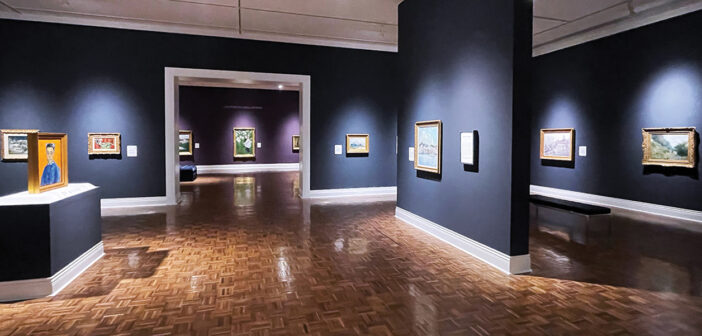On view through January 26, 2025 the Flint Institute of Arts (FIA) has procured on loan The Sheltered Path, one of the most beloved examples of Claude Monet’s love for the French countryside and his revolutionary mastery of rendering light and atmosphere.
To find out more about this timeless work, My City reached out to Sarah Kohn, Director and Curator of Collections and Exhibitions.
In The Sheltered Path, Monet purposefully rejects a picturesque landscape. Instead, he depicts an unremarkable part of the Parisian suburb of Argenteuil. A man walks alone down a dusty road where there are no traces of human habitation to mark his location. Painted a year before this painting style would be dubbed “impressionist” by an art critic, this artwork reveals an interest in capturing the energy, color and motion of a simple rural landscape.*
*flintarts.org
MC: What was the process of procuring this painting for the exhibit?
SK: While our Mary Cassatt painting is on loan to the traveling exhibition “Mary Cassatt at Work” (currently at Fine Arts Museums of San Francisco, Legion of Honor), the Philadelphia Museum of Art agreed to loan us another Impressionist painting from their collection. The loan is not part of a special exhibition, but can be found in our Rabiah Gallery, which was recently renovated.
MC: Tell us about the specific period in Monet’s career when this painting was created.
SK: This painting was completed relatively early in his long career, less than 20 years after he met artist Eugène Boudin and began painting outdoors. The Sheltered Path was painted right around the time that Monet’s mature style was developing.

Claude Monet | French, 1840-1926 | The Sheltered Path, 1873 | Oil on canvas | 25 1/16 x 25 ⅞ inches | Philadelphia Museum of Art: Gift of Mr. and Mrs. Hughes Norment in honor of William H. Donner, 1972-227-1
MC: Can you share any details about the painting’s provenance?
SK: According to the Philadelphia Museum of Art, the painting was sold by the artist to the Durand-Ruel gallery in Paris in 1873. It was then sold and purchased by several individuals until it was gifted to the museum by Mr. and Mrs. Hughs F. Norment in 1972.
MC: What is the historical or cultural significance of this painting within Monet’s larger body of work?
SK: This painting is quite significant, because it is an example of early Impressionism. It was painted a year before the first Impressionist exhibition and exemplifies a style and subject that would go on to become one of the most significant movements in modern art. You can see how Monet considers light and color in a unique way and uses small, visible brushstrokes to create a sense of perpetual motion. Like many other Impressionist paintings, the subject matter is not grandiose; it is a simple landscape with trees, a road and one lone figure. Despite its humble location, the painting is full of life and vibrancy, making it feel like it is the most magical path.














